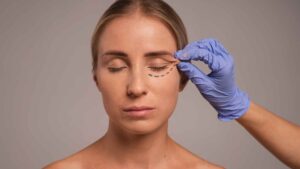Rhinoplasty, commonly referred to as a “nose job,” is one of the most popular cosmetic procedures in the United States. This versatile surgery can address a variety of concerns, from aesthetic refinements to functional improvements. At BeautyLand Plastic Surgery in Miami, Dr. Oliver Pope Simmons M.D. and Dr. Jaime Flores M.D. are experts in creating natural, balanced results tailored to each patient’s unique facial features and goals.
Rhinoplasty is not only about enhancing appearance—it can also correct medical issues like a deviated septum or breathing difficulties. If you’re considering rhinoplasty, here’s everything you need to know about the procedure, recovery, and more.
What Is Rhinoplasty?
Rhinoplasty is a surgical procedure designed to reshape the nose. It can improve:
- The overall size or proportion of the nose.
- A hump or bump on the nasal bridge.
- A bulbous, drooping, or upturned nasal tip.
- Asymmetry or deformities caused by injury.
- Functional issues, such as difficulty breathing.
The surgery can be cosmetic, functional, or a combination of both.
Why Non-Surgical Options Might Not Be as Effective
Non-surgical rhinoplasty, often called a “liquid nose job,” involves using dermal fillers to temporarily alter the shape of the nose. While this approach is non-invasive and requires little downtime, it has limitations:
- Temporary Results: Fillers typically last 6-12 months, requiring repeated treatments to maintain the look.
- No Functional Benefits: Non-surgical rhinoplasty cannot address breathing issues or structural problems like a deviated septum.
- Limited Scope: Fillers can add volume but cannot reduce the size of the nose or address underlying bone or cartilage issues.
For patients seeking permanent, functional, and transformative results, surgical rhinoplasty remains the gold standard.
Addressing a Deviated Septum
A deviated septum occurs when the nasal septum—the thin wall separating the nostrils—is crooked or off-center, leading to:
- Difficulty breathing through one or both nostrils.
- Frequent sinus infections or congestion.
- Snoring or sleep disturbances.
Rhinoplasty can include a septoplasty, a procedure to straighten the septum, improving airflow and overall nasal function. This is particularly beneficial for patients seeking relief from chronic nasal issues alongside cosmetic enhancements.
What to Expect: Pre-Op, Surgery, and Recovery
Pre-Operative Preparation
Your rhinoplasty journey begins with a detailed consultation. During this meeting, your surgeon will evaluate your nasal structure, discuss your goals, and create a personalized surgical plan.
Preparation includes:
- Avoiding certain medications, such as blood thinners, before surgery.
- Quitting smoking, as it impairs healing.
- Completing pre-operative tests or imaging if needed for functional concerns.
The Procedure
Rhinoplasty can be performed using two main techniques:
- Closed Rhinoplasty: Incisions are made inside the nostrils, resulting in no visible scarring.
- Open Rhinoplasty: A small incision is made on the columella (the tissue between the nostrils) for greater access to the nasal structure.
The choice of technique depends on the complexity of the surgery and your specific needs. The procedure typically lasts 1-3 hours and is performed under general anesthesia.
Post-Operative Recovery
Recovery is a gradual process. Key milestones include:
- First Week: Swelling, bruising, and nasal congestion are common. A nasal splint is usually removed after 7 days.
- First Month: Most bruising resolves, and breathing improves as swelling decreases.
- Final Results: Subtle changes continue as the nose heals, with final results visible after 6-12 months.
Your surgeon will provide detailed aftercare instructions to ensure optimal healing, including guidelines on cleaning the nasal area, avoiding strenuous activities, and managing swelling.
Benefits of Rhinoplasty
Rhinoplasty offers both aesthetic and functional improvements:
- Enhanced facial harmony and balance.
- Correction of deformities or asymmetry.
- Improved breathing and nasal function.
- Boosted confidence and self-esteem.
7 FAQs About Rhinoplasty
- Am I a good candidate for rhinoplasty?
Ideal candidates are in good health, have fully developed facial structures (typically age 16-18), and have realistic expectations about the results. - Can rhinoplasty fix breathing problems?
Yes, rhinoplasty can address functional issues like a deviated septum or nasal obstructions, improving airflow and breathing. - How painful is rhinoplasty?
Most patients report mild to moderate discomfort, which is manageable with prescribed pain medications. Post-surgical congestion and swelling are more common concerns than pain. - Will there be visible scars?
Scarring is minimal or non-existent. Closed rhinoplasty has no visible scars, while open rhinoplasty leaves a small, often imperceptible scar on the columella. - How much does rhinoplasty cost?
In Miami, the cost ranges from $5,000 to $10,000, depending on the complexity of the procedure. Functional rhinoplasty or septoplasty may be partially covered by insurance if deemed medically necessary. - When can I return to work or daily activities?
Most patients can return to work within 1-2 weeks, though strenuous activities should be avoided for at least 4-6 weeks. - What are the risks of rhinoplasty?
Risks include infection, bleeding, asymmetry, or dissatisfaction with results. Choosing an experienced surgeon minimizes these risks and ensures a smoother recovery.
Transformative Procedure
Rhinoplasty is a transformative procedure that blends artistry with functionality, addressing both aesthetic concerns and medical needs. Whether you’re seeking a refined profile, relief from breathing issues, or a combination of both, surgical rhinoplasty offers comprehensive and lasting results.
At BeautyLand Plastic Surgery in Miami, Dr. Oliver Pope Simmons M.D. and Dr. Jaime Flores M.D. provide expert care and tailored solutions to help you achieve your desired outcome. Schedule a consultation here to learn more and take the first step toward your transformation.




